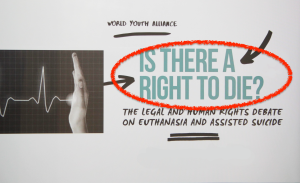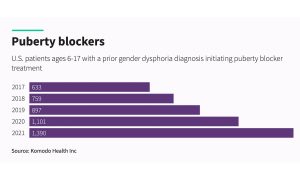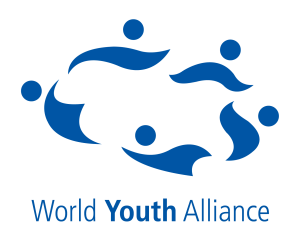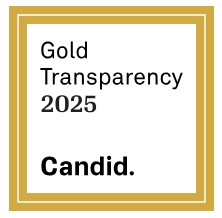Foreign aid typically entails the transfer of capital, goods, or services from a country or international organization for the benefit of the recipient country. In targeted disaster relief and humanitarian efforts, it often succeeds.
But it in itself is fraught with problems.
Most troubling, it can be used as a tool for coercing recipient nations into adopting policies and legislation that undermine national laws and the principles of human dignity alike.
In such cases, foreign aid becomes a form of ideological colonization. It is sometimes deployed to force countries to implement population control policies or so-called reproductive rights.
Foreign Aid and Advancing “Human Rights” in Kenya
Such a situation may be unfolding in Kenya. WYA is closely monitoring the connection between The Global Fund and recent healthcare policy developments in that country.
The Global Fund is the world’s largest financier of AIDS, TB, and malaria care programs. As of 2017, the Global Fund’s Baseline Assessment on Kenya called for a “comprehensive response to human rights-related barriers to HIV, TB and malaria services in Kenya.”
Foremost on the list of the Fund’s desired interventions: “Standardization and coordination of . . . training for healthcare workers on human rights and medical ethics.”
And what, one might ask, are The Global Fund’s priorities for human rights and medical ethics? In other words, what are the priorities for the foreign aid being offered?
A clue can be found in a September 2022 statement from President Biden, who announced record-level funding for The Global Fund and said that “advancing sexual and reproductive health and rights” was part of the larger fight against HIV/AIDS, TB and malaria.
Just a few months later, in February 2023, the Kenya Ministry of Health announced a successful meeting with The Global Fund team, covering a “wide range of topics” including “ways to make Universal Health Coverage (UHC) work” and “secure its financing.” According to the article, the manager of The Global Fund spoke about “a balance of $13 million yet to be given.”
Foreign Aid, Abortion, and Surrogacy as a Package Deal
On October 19, 2023, the President of Kenya signed four Universal Health Care Bills into law, laying the foundation for “the biggest change in the healthcare system ever witnessed.” The four new bills introduce “new funding mechanisms” although the full details of the financing “have not yet been established.”
Then in December, Kenya’s Director General of Health launched the Healthcare Providers Training Manual on Human Rights, HAPCA [HIV and AIDS Prevent and Control Act] and Medical Ethics. Chapter One of the training manual focuses on:
1. Abortion, contraception, and reproductive rights
2. Contraception
3. Assisted reproductive technologies and surrogacy
The first area of focus (abortion, contraception, and reproductive rights) is said to “pose a challenge” when dealing with “minors, people with disabilities, marginalized populations, and people in prisons and other confined settings.”
Humanitarian Aid should not Challenge Human Dignity
What the document issued by Kenya’s Department of Health doesn’t say is that abortion also “poses a challenge” to the Constitution of Kenya: “Every person has the right to life. The life of a person begins at conception” (Constitution art. 26).
The manual also discusses challenges to the practice of surrogacy and the need to support it— despite the fact that attempts to legalize surrogacy in Kenya have been rejected by Kenya’s legislature in the past decade.
Ideological Colonization… Including Gender Theory
Chapter Two of the Training Manual, ‘Impact of Gender and Health Outcomes,’ states that “prevalence and impact of infectious diseases, including HIV/AIDS, can differ based on gender.”
However, the manual fails to acknowledge that hormonal contraception doubles the risk of HIV-1 acquisition by women and HIV-1 transmission from women to men . . . or that contraceptive use can change the vaginal environment and increase cervicovaginal shedding of HIV-1, among other factors.
Instead, the two case studies discuss how to provide minors with contraception and abortion without parental knowledge and consent. You might ask what does this have to do with foreign aid?
The impact of gender on health outcomes is made clear as mud, as the document goes on to say: “Individuals who do not conform to traditional gender norms or identify as sexual or gender minorities may face unique healthcare challenges.”
One can imagine what this means, but the right to healthcare, including reproductive healthcare, is specifically laid out in the Kenyan Constitution (Constitution art. 43), whereas ‘sexual and gender minority health’ is not.
Nevertheless, answers to what the training manual means by ‘sexual and gender minority health’ can be found in The Global Fund’s 2017 Baseline Assessment, where ‘gender’ refers to “women and girls, including trans women.”
In a paper published in 2020 in the Journal of the International AIDS Society, “sexual minority persons,” are defined as men who have sex with men (MSM) and transgender women (TGW).
In another paper entitled, “Transgender women in Kenya experience greater stigma, depressive symptoms, alcohol and drug use and risky sexual practices than cis-gendered men who have sex with men,” the abstract begins: “Worldwide, sexual and gender minority individuals have disproportionate burden of HIV.” It goes on to provide further specifics of a high-risk population:
HIV prevalence and incidence are far higher among African MSM and TGW than other reproductive age adults in their countries . . . These disparities are further exacerbated for transgender women (TGW) . . . Among a sample of 14 Kenyan TGW, HIV incidence over one year was 20.6 per 100 person-years (PY), compared to 4.5 per 100 PYs among 42 cis-MSM who reported only male partners . . . This very high HIV incidence in TGW is in keeping with meta-analysis showing that TGW face up to 48 times the odds of HIV prevalence than the general adult population, in both high- and low-income countries.
If healthcare professionals are to ensure that “the diverse needs of individuals of all genders” (including those who identify as “sexual or gender minorities”) are to be safeguarded, why is the language in the training manual so unclear?
Why does a training manual on HIV prevent contain zero mention of generalized versus concentrated epidemics, high-risk populations, risk-avoidance versus harm-reduction strategies, treatment as prevention, or any other research and science-based health information vital to the fight against HIV/AIDS?
Foreign Aid must Serve, not Indoctrinate
An early slogan in the fight against HIV/AIDS in the United States was “silence equals death.” The reality is that HIV/AIDS transmission for transgender women (as described in the above paper) is far more likely than it is for women and girls.
However, transgender women are a type of “socially hidden” minority of the population in Kenya, in contrast to women and girls contracting HIV. Most Kenyans would not see meeting the health needs of transgender women as a priority.
Finally, instead of offering any clear guidelines on disease prevention or control, the manual instead concludes with “the ethical dilemma of euthanasia.”
World Youth Alliance will continue to monitor these and other documents in our efforts to protect and promote the dignity of the person. It is important to participate in this process and we are grateful for the opportunity to give constructive feedback on the original draft of the document.
Notably, World Youth Alliance was successful in removing the case studies (mentioned above) from the final draft of the document, to ensure respect for parental rights in the context of minors.
Additionally, the World Youth Alliance advocacy team was able to make contributions to the facilitator’s guide and training slides.
It’s a start.
But it seems that “foreign aid” is once again being wielded against constitutional order and human lives. Much work to protect human dignity lies ahead.
1 WYA Declaration on Foreign Aid and Coercion, wya.net/wp-content/uploads/WYA-Declaration-on-Foreign-Aid-and-Coercion.pdf.
2 Scaling-up Programs to Reduce Human Rights-Related Barriers to HIV, TB and Malaria Services. Baseline assessment – Kenya. The Global Fund. July 7, 2017. 5-13. https://www.theglobalfund.org/media/8719/crg_humanrightsbaselineassessmentjamaica_report_en.pdf
3 Ibid., 16.
4 The White House. President Biden Raises Record Level Funding for Global Health through Global Fund Seventh Replenishment. September 21, 2022. https://www.whitehouse.gov/briefing-room/statements-releases/2022/09/21/fact-sheet-president-biden-raises-record-level-funding-for-global-health-through-global-fund-seventh-replenishment/
5 Kenya Ministry of Health. MOH News. Boosting Healthcare In Kenya Global Fund Country Team Meets With PS Tum. February 28, 2023. https://www.health.go.ke/boosting-healthcare-kenya-global-fund-country-team-meets-ps-tum
6 New laws bring major reform to Kenyan health care. Makoni, Munyaradzi. The Lancet, Volume 402. November 2023.
7 Ibid.
8 World Youth Alliance White Paper on HIV/AIDS, by Meghan Grizzle, J.D., reviewed by Dr. Timothy Flanigan, Professor of Medicine, Infectious Diseases, Brown University Medical School.
9 Mehta, S.D., Otieno, F.O., Kimani, J. et al. Transgender women in Kenya experience greater stigma, depressive symptoms, alcohol and drug use and risky sexual practices than cis-gendered men who have sex with men. BMC Public Health 23, 1493 (2023). https://doi.org/10.1186/s12889-023-16348-6.








